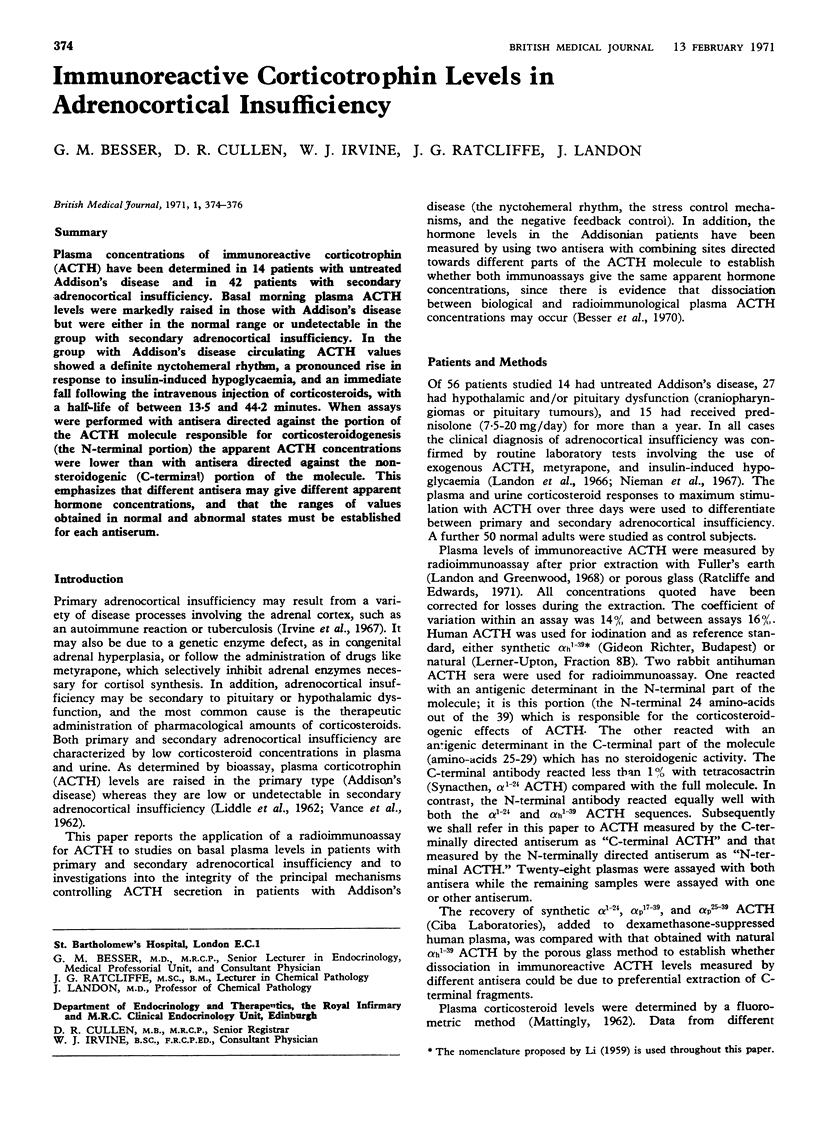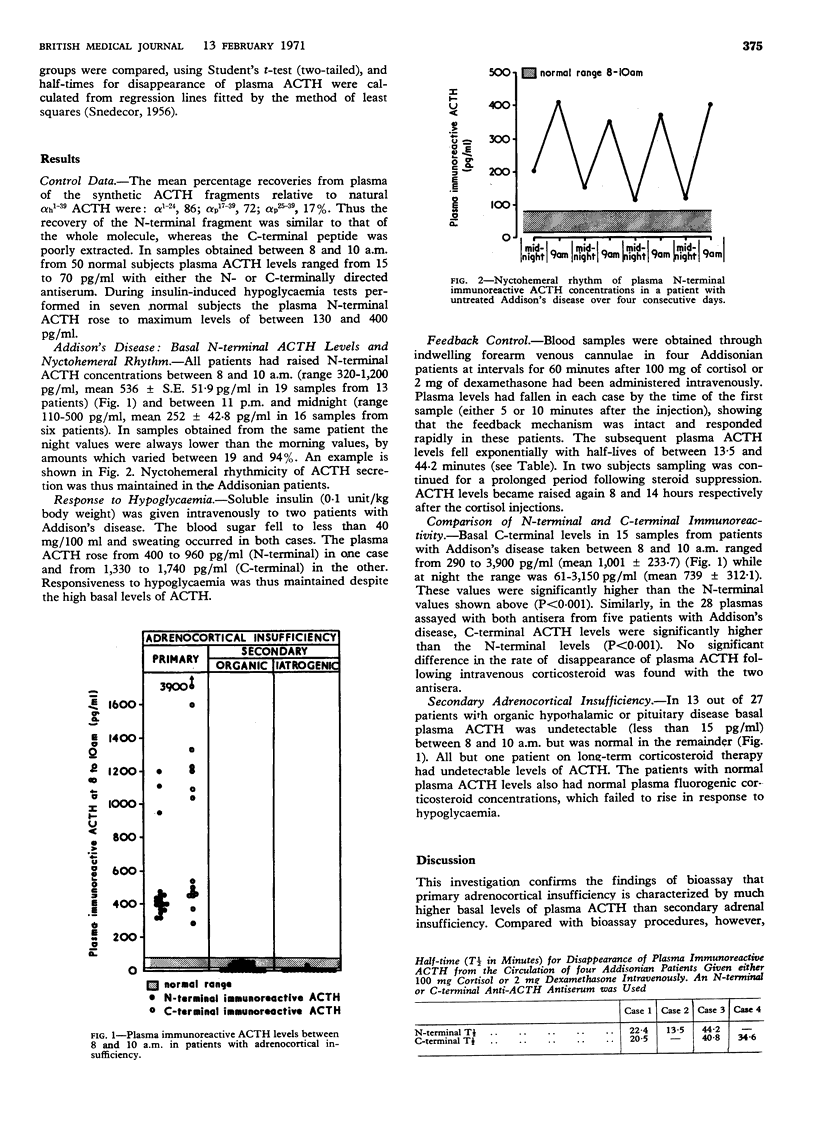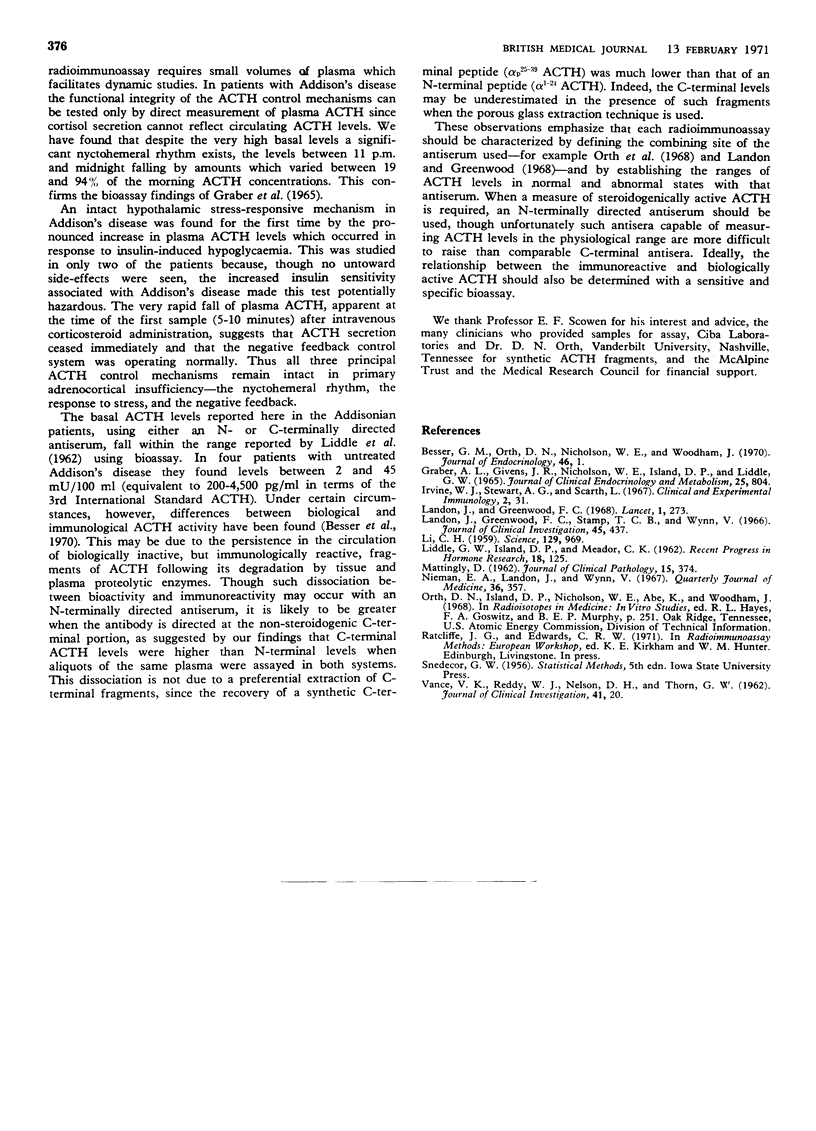Abstract
Plasma concentrations of immunoreactive corticotrophin (ACTH) have been determined in 14 patients with untreated Addison's disease and in 42 patients with secondary adrenocortical insufficiency. Basal morning plasma ACTH levels were markedly raised in those with Addison's disease but were either in the normal range or undetectable in the group with secondary adrenocortical insufficiency. In the group with Addison's disease circulating ACTH values showed a definite nyctohemeral rhythm, a pronounced rise in response to insulin-induced hypoglycaemia, and an immediate fall following the intravenous injection of corticosteroids, with a half-life of between 13·5 and 44·2 minutes. When assays were performed with antisera directed against the portion of the ACTH molecule responsible for corticosteroidogenesis (the N-terminal portion) the apparent ACTH concentrations were lower than with antisera directed against the non-steroidogenic (C-terminal) portion of the molecule. This emphasizes that different antisera may give different apparent hormone concentrations, and that the ranges of values obtained in normal and abnormal states must be established for each antiserum.
Full text
PDF


Selected References
These references are in PubMed. This may not be the complete list of references from this article.
- GRABER A. L., GIVENS J. R., NICHOLSON W. E., ISLAND D. P., LIDDLE G. W. PERSISTENCE OF DIURNAL RHYTHMICITY IN PLASMA ACTH CONCENTRATIONS IN CORTISOL-DEFICIENT PATIENTS. J Clin Endocrinol Metab. 1965 Jun;25:804–807. doi: 10.1210/jcem-25-6-804. [DOI] [PubMed] [Google Scholar]
- Irvine W. J., Stewart A. G., Scarth L. A clinical and immunological study of adrenocortical insufficiency (Addison's disease). Clin Exp Immunol. 1967 Jan;2(1):31–70. [PMC free article] [PubMed] [Google Scholar]
- LI C. H. Proposed system of terminology for preparations of adrenocorticotropic hormone. Science. 1959 Apr 10;129(3354):969–970. doi: 10.1126/science.129.3354.969-a. [DOI] [PubMed] [Google Scholar]
- Landon J., Greenwood F. C., Stamp T. C., Wynn V. The plasma sugar, free fatty acid, cortisol, and growth hormone response to insulin, and the comparison of this procedure with other tests of pituitary and adrenal function. II. In patients with hypothalamic or pituitary dysfunction or anorexia nervosa. J Clin Invest. 1966 Apr;45(4):437–449. doi: 10.1172/JCI105358. [DOI] [PMC free article] [PubMed] [Google Scholar]
- MATTINGLY D. A simple fluorimetric method for the estimation of free 11-hydroxycorticoids in human plasma. J Clin Pathol. 1962 Jul;15:374–379. doi: 10.1136/jcp.15.4.374. [DOI] [PMC free article] [PubMed] [Google Scholar]
- Nieman E. A., Landon J., Wynn V. Endocrine function in patients with untreated chromophobe adenomas. Q J Med. 1967 Jul;36(143):357–392. [PubMed] [Google Scholar]
- Taleisnik S., Velasco M. E., Astrada J. J. Effect of hypothalamic deafferentation on the control of luteinizing hormone secretion. J Endocrinol. 1970 Jan;46(1):1–7. doi: 10.1677/joe.0.0460001. [DOI] [PubMed] [Google Scholar]


